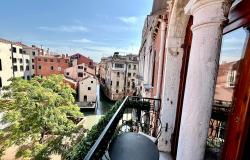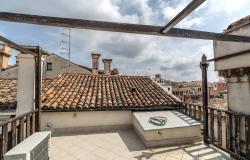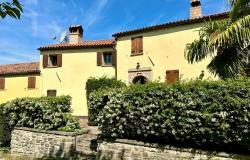More secluded than other popular valleys in the Dolomites, but no less beautiful, the Cadore is a historical area within the region of Veneto, located at the border with Austria, South Tyrol and Friuli-Venezia Giulia, in the northernmost section of the province of Belluno.
Once poor and undeveloped, it is now a thriving tourism destination thanks to its gorgeous natural landscapes, part of the Eastern Dolomites, and the endless opportunities for outdoors activities: skiing and snowshoeing in the winter, hiking, biking, climbing and more in the summer.
It is in the Cadore that the powerful Republic of Venice sourced the woods that were used to build not just the foundations of palaces, but also ships; the wood market was so profitable that wealthy Venetians invested their money into forested lands and sawmills; among them, the famous painter Titian, who was born in Pieve di Cadore, and thus used the proceeds from the sale of his works of art.
A must-see in the Cadore is Lake Misurina: the largest natural lake of the Cadore, lying at 1,754 m above sea level, it is magical in all seasons, but acquires a special aura in the winter, when the snow muffles everything: the traces left by people’s boots blends with those left by the local fauna, such as white hares, foxes and ermines. Frozen in winter, framed by the sheer walls of the Dolomites, the Lake Misurina area features a small, usually uncrowded ski area, with breathtaking views.
Cadore is in fact an ideal destination for those who prefer tranquil ski pistes; at the same time, it is easy to access more famous ski areas, as it is all part of the Dolomiti Superski, the largest connected ski resort in the world, with 12 ski valleys and 1200 km of pistes.
Lake Misurina is near Auronzo di Cadore, one of the main centers of the valley, located approximately 120 kilometres (75 mi) north of Venice.
Auronzo is close to another main draw of Cadore, the famous Tre Cime di Lavaredo (Drei Zinnen). Part of the Sexten Dolomites (Dolomiti di Sesto), the Tre Cime are one of the most recognizable symbols of the Unesco-inscribed Dolomites, often appearing in photographs with their distinctive pinnacle-like shape, rising up to almost 3,000 meters. Formed by the Cima Piccola (‘little peak’), Cima Grande (‘big peak’) and Cima Ovest (‘western peak’), the Tre Cime can be best admired by walking the 10-km loop starting at Rifugio Auronzo, which stands at the top of a toll road. It is a spectacular walk, with amazing views in all directions; for this reason, means it attracts many visitors, especially in the summer months, which should be best avoided.
Monte Pelmo is another spectacular mountain of the Dolomites around here, a giant block rising isolated from other peaks, and therefore clearly visible even from neighboring valleys and nearby mountains such as Antelao and Monte Civetta. It was one of the first major Dolomite peaks to be climbed.
Cadore also means charming little villages surrounded by mountains, among them: Dosoledo, a handful of stone houses converging toward the main square; Casamazzagno, few houses arranged in a row along the grassy ridge constantly exposed to the sun; tiny Danta di Cadore, ancient and austere, in a beautiful panoramic location.
Want to explore the Dolomites? 'Shorter Walks in the Dolomites', published by Cicerone Press, contains 50 day walks to discover the most beautiful mountains in the world.













